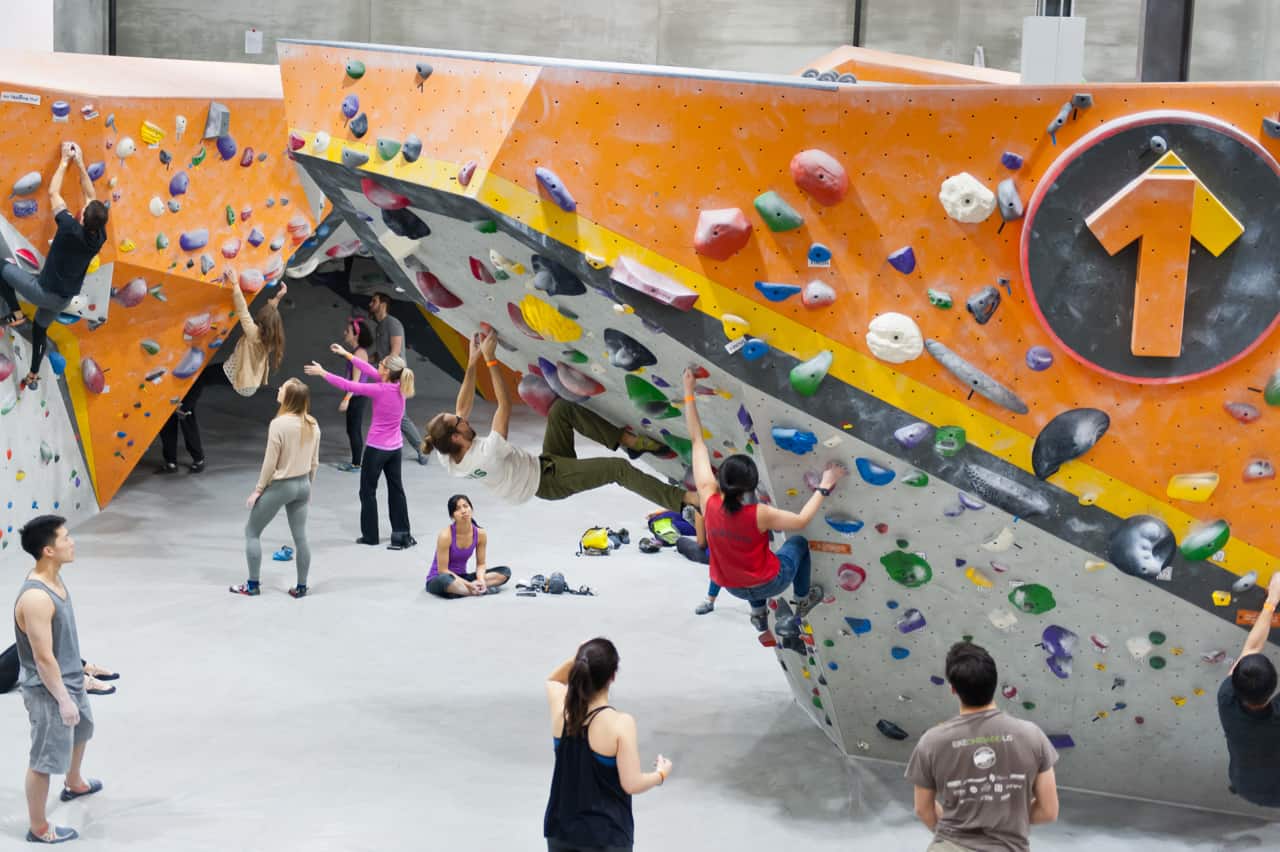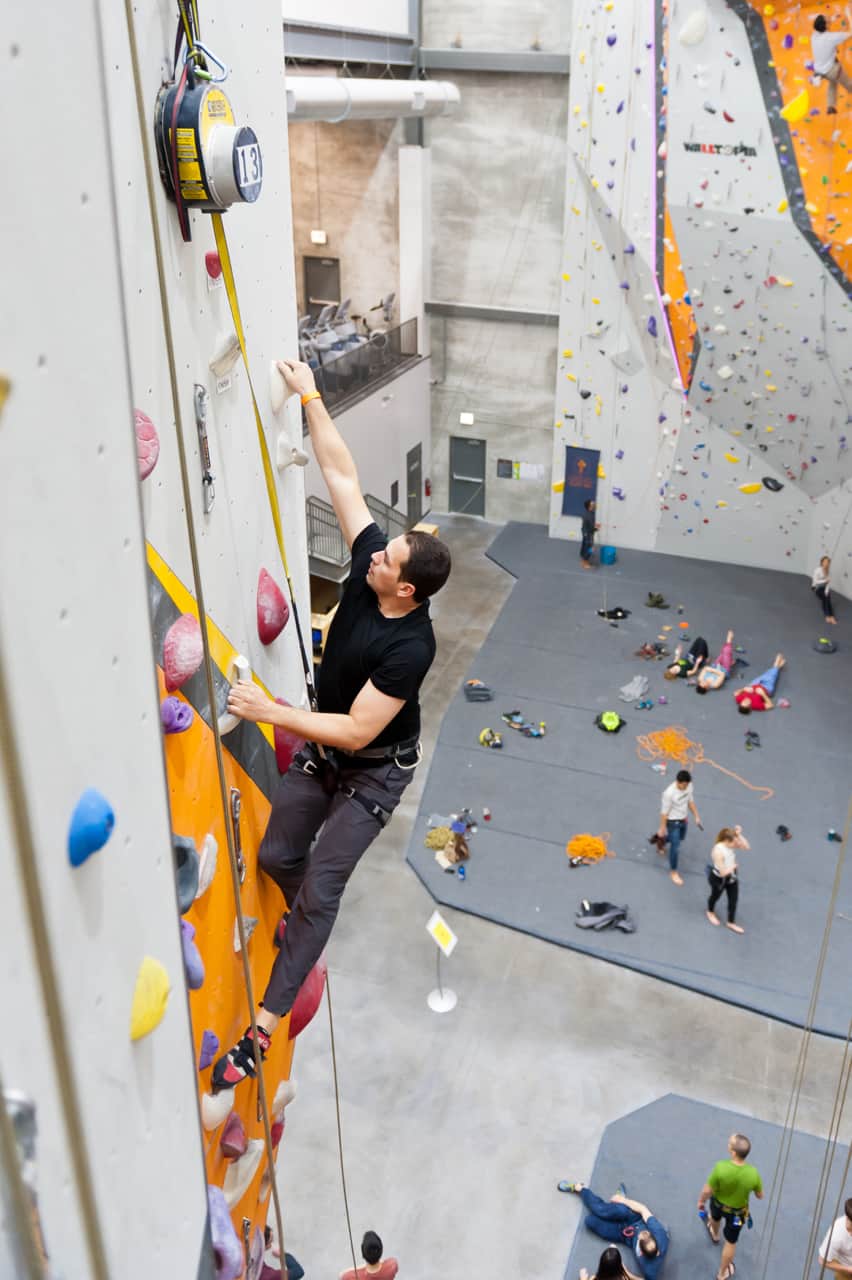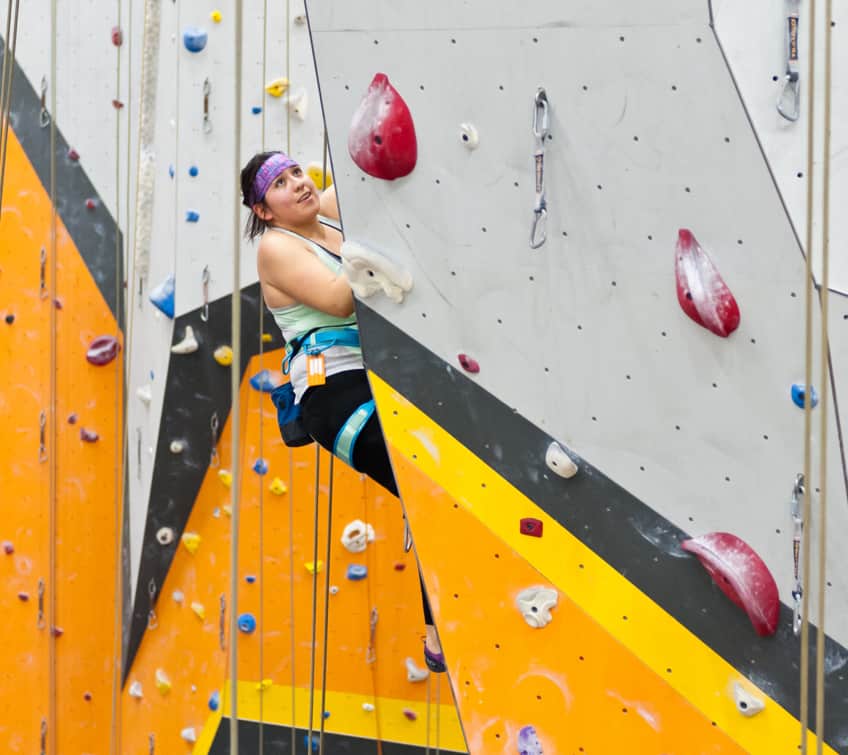
While the time spent at First Ascent or on an outdoor climb is great for the mind and soul, you might be wondering: Are there health benefits to rock climbing? Should I do cardio or weight training in addition to climbing, or is climbing enough? We asked one of our resident trainers and the lead trainer of our BASECAMP small group training program, Chris Swindell, to share with us the questions he receives most often about fitness, health and climbing. Here’s what Chris had to say.
Is rock climbing a good enough workout on its own, or are cardio and weights important for a climber?
There is absolutely no question that climbing regularly will help you move your body in ways it will never ordinarily move. Your body, while climbing, is pushed to the very edge of your range of motion. The movement you can reach in your climbing practice would be very hard to replicate at the gym — and can be done with much less effort.
Your body, while climbing, is pushed to the very edge of your range of motion. The movement you can reach in your climbing practice would be very hard to replicate at the gym — and can be done with much less effort.
That said, making cardio and weight training a regular part of your fitness routine will only improve your climbing experience. There is no question that there is a baseline level of athleticism that you need to have to climb — but that doesn’t mean you have to be an athlete to climb well. Like anything else, the more you climb, the better you’ll climb.
Similarly, the more fit you are, the more capable you will be of undertaking longer, more challenging climbs. If you are overweight or understrengthed your climbing will improve with regular, low-level cardiovascular activity gauged by heart rate zones. Gradual, healthy weight loss will also help your climbing practice.
Your focus at the gym should be less about building strength and more about having good posture when you’re lifting. Learning how to lift properly by working out with dumbbells will help you multitask movement and weights, which closely aligns to the multitasking you have to do when you climb.
What are the benefits of switching up your workout routine, alternating gym time and climbing?
One of the cool things about climbing is that you are able to do it on your days away from the gym. Climbing provides a great way to recover after a strength training workout. If you’re sore, moving your body through a range of motion during a climb will help your muscles recover faster.
Also, there is a lot of rest time built into climbing, because you’re always climbing in a community. The time you spend helping your partners climb gives you a break – and lets you rest without sitting around or lazing on the couch – between your own movement.
How does rock climbing help keep you healthy?
To stay healthy, you should aim to have about an hour of activity every day. Climbing is an incredible way to make fitness a regular part of your life because it’s fun! Climbing is also a great way to get fit and forget that you’re working out while you’re doing it. The social aspect of climbing helps even the most gym-averse climbers forget forget that they are working out. Improving cardiovascular health and increasing your strength and endurance levels are the happy secondary, but equally important, benefits.
 In addition to promoting heart health, muscle strength and overall flexibility, the health benefits of rock climbing include staving off chronic illness like osteoporosis and arthritis. Any activity that puts a healthy level of stress on your bones is fantastic for preventing osteoporosis. When you climb, your body has to maintain strength to balance the intensity of the climb and your own body weight. The compression you are putting on your bones while you are holding up your body weight during a climb helps to increase your bone density.
In addition to promoting heart health, muscle strength and overall flexibility, the health benefits of rock climbing include staving off chronic illness like osteoporosis and arthritis. Any activity that puts a healthy level of stress on your bones is fantastic for preventing osteoporosis. When you climb, your body has to maintain strength to balance the intensity of the climb and your own body weight. The compression you are putting on your bones while you are holding up your body weight during a climb helps to increase your bone density.
The movement involved in climbing can also prevent arthritis. Because climbing requires movement in every way and in every direction, all your joints and ligaments are engaged in low-intensity activity. The best way to keep your joints healthy is to keep moving. Rock climbing improves flexibility, which prevents stiffness and injury. If you are flexible, you will have a greater ability to climb and lower likelihood of experiencing a climbing related injury. Yoga and functional training are also great to support proper positioning and injury prevention which also have a circular, positive impact on your climbing ability.
